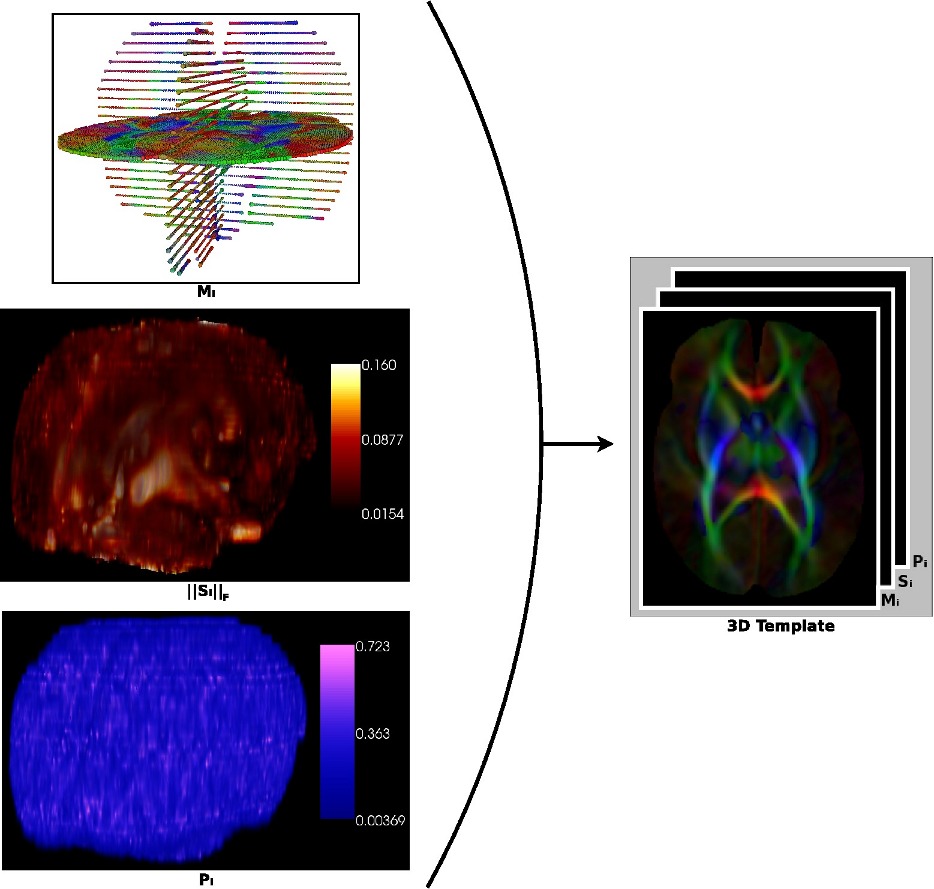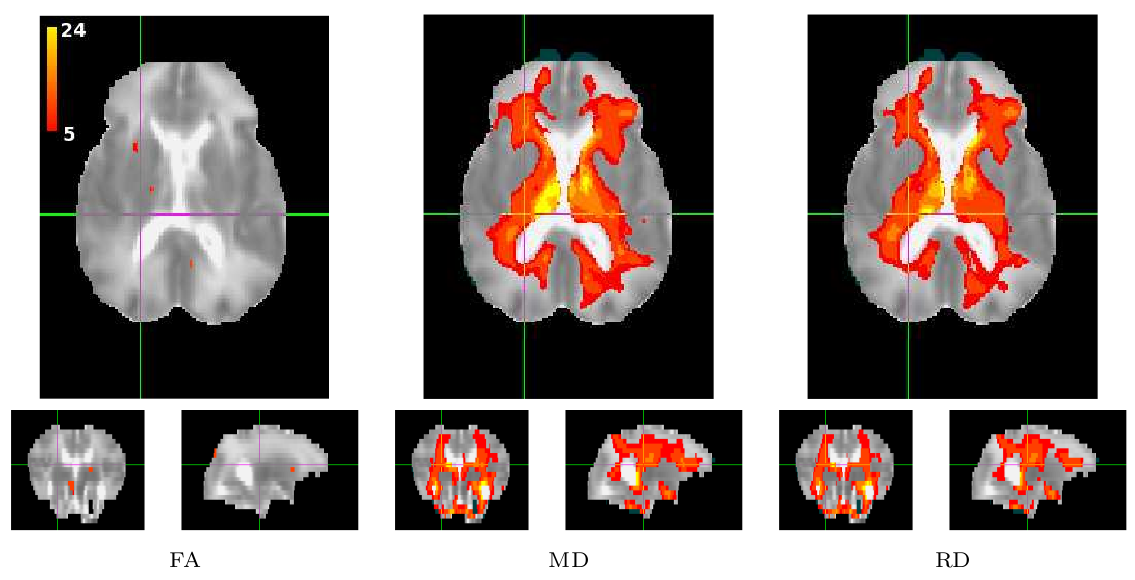
Statistical Template Estimation for Abnormality Mapping
| Home | e.g. Templates: View, Download | Source Code | Contacts |
STEAM is a whole brain voxel-based analysis engine for the examination of diffusion tensor images (DTIs) of the developing preterm infant brain. Key to our STEAM analysis engine is a collection of 3D statistical DTI templates that represent a "normal" control population. These templates are used as a statistical model that new scans can be compared to in order to highlight regions of abnormality.

Fig. 1: An example of a STEAM statistical template
Each STEAM statistical templates provides a snapshot of the preterm infant brain for a particular age range (typically five weeks long). One example of the full tensor statistical template is shown in Figure 1. The templates are represented by three separate images:
-
The Mean Image shows the average diffusion properties,
at each voxel, for a normative preterm infant population. This is the typical population
representation you would find with other popular DTI atlases (e.g.
ICBM DTI-81 Atlas,
MRIStudio Atlases)
- The (Co-) Variance Image captures the variability
of the diffusion measurements at each voxel across a normative preterm infant population.
Combining this with the mean image gives a full description of a Normal distribution over
the diffusion measurements at each voxel. Having the full distribution at each voxel allows
us to then compute statistics with our atlas.
- The Normalcy p-value Image describes how well the diffusion measurements of a normative preterm infant population can be represented by Normal distributions. Each voxel contains a p-value that captures the probability the diffusion measurements at that voxel are normally distributed. Any small p-values in this image suggest that the Normal distribution at that voxel may be a misleading representation of the population.

Fig. 2: Sample voxel-based analysis results using STEAM
These statistical templates provide a statistical representation of a normative preterm infant population that can be compiled offline. Then, when a new preterm infant in scanned, a user of STEAM can take that infant's diffusion tensor image, align it to the mean image in the statistical template, and perform voxel-by-voxel statistical comparisons. In this way, STEAM is able to generate a subject-specific result. Examples of such result results are shown in Figure 2.
One of the strengths of STEAM is that it identifies abnormalities both over the whole brain and at the level of each individual voxel. These two qualities allow STEAM to examine brain regions that were previously unexamined while also localizing abnormalities down to the level of individual voxels.
In total, the STEAM template collection consists of 14 different statistical templates which includes the full tensor atlas and many of the features that can be computed from those tensors. Each template can also be generated at multiple spatial scales (between 0-8mm FWHM Gaussian smoothing). Figure 3 shows each template in the STEAM collection. Some of the features for which STEAM has templates, like Mean Diffusivity (MD) and Fractional Anisotropy (FA), are commonly used in preterm infant DTI analysis, but many have yet to be explored. STEAM provides the ability to examine these tensor features in a comprehensive and subject-specific way.
To learn more about the STEAM analysis engine and its use in subject-specific DTI analysis, please see our NeuroImage paper on the subject.
© SFU Medical Image Analysis Lab, 2014
